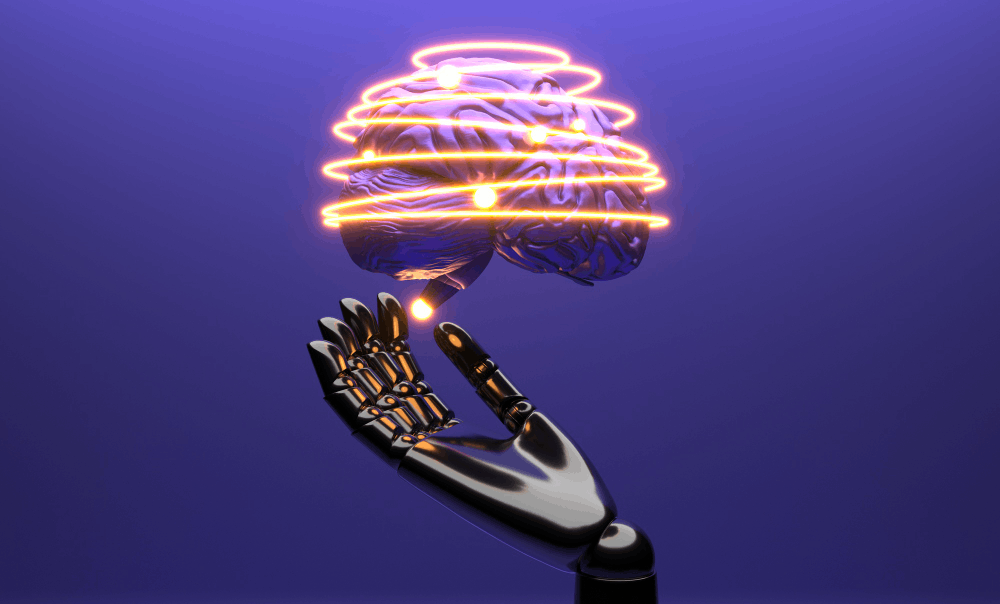The term artificial intelligence (AI) was first introduced in the 1950s as a branch of computer science concerned with the automation of intelligent behavior. Since then, AI and its associated techniques have developed rapidly to the point that today not only is there still no fully accepted definition of what AI is, but there are various approaches to it.
Most frequently, AI is associated with the ability of a machine to sense its environment, learn from experience, make decisions based on input and goals, and ultimately perform human-like tasks. With the swift progress made by Big Data technologies and the ever-increasing capacity of computer storage and lightning-fast speed of data processing machines, AI is being revitalized.
Considering those advances AI could also be defined as “the ability (of a computer system) to correctly interpret external data, learn from such data, and use those learnings to achieve specific goals and tasks through flexible adaptation” (Kaplan & Haenlein). These “intelligent” systems use all kinds of algorithms and machine learning techniques to learn from data and make decisions aimed at achieving specific goals.
The Impact of AI on Organizations
After many years of promising expectations, AI is gaining momentum in business organizations all around the world and applications extend to a wide-ranging variety of fields and contexts: from image recognition, video surveillance, telemedicine, robots, autonomous vehicles, and social media websites, to voice recognition, machine translations, online games, autonomous planning and programming, spam filters, weather forecasts, etc.
Contrary to popular belief, AI does not make us humans smarter. Certainly, it is not going to replace transformational leader in making smart business decisions in the short term. However, AI may make business leaders a little less prone to bias, or at least start to question it, so they can better allocate resources where they’re needed and perhaps make organizations more agile.
There is no doubt that AI has enormous potential, and that computers and robots are slowly approaching ever closer levels of human intelligence. Does this mean that AI is becoming an increasingly serious competitor for human jobs? The debate is served. Perhaps the day is not far off when human supremacy over machines is questioned.
Be that as it may, everything indicates that AI is going to bring great changes to our daily lives and society in general. The impact of AI on business and employment is expected to be massive, resulting in highly interconnected organizations whose decision-making will be based on analytics and autonomous exploitation of Big Data to cope with increasingly intense global competition.
Types of Artificial Intelligence
There are three main types of AI according to the literature on the subject:
- Narrow artificial intelligence (also known as weak AI)
It is that AI with limited learning and adaptation abilities and that can only be used in routine and/or repetitive tasks. Narrow AI is applied in very specific fields where AI is better and works faster than humans (e.g., to identify tumors, play chess games, play a videogame). This type of AI represents the current stage of AI development.
- Artificial general intelligence (known as strong AI)
It is more powerful than weak AI and is focused on more complex tasks that involve the processing and learning of Big Data. Therefore, it is an AI very close to human intelligence and can even surpass it in some specific fields.
- Artificial superintelligence
It is the self-aware AI, i.e., the AI that performs better than humans in all areas. For now, this AI is more science fiction than reality, but it seems that it is the way we are heading.
Another very popular classification of AI is the one proposed by IBM, which differentiates four types of AI according to the degree of human intervention and the type of systems in which the AI runs:
- Assisted intelligence
It is AI based on systems preprogrammed by humans that do not have the ability to learn from their interactions with the environment in which they operate. This type of AI can perform routine and repetitive tasks at high speed and is therefore good at helping humans perform certain tasks in a more agile and efficient manner.
- Automated intelligence
It is AI intended to automate manual or cognitive tasks, whether routine or non-routine. This type of AI is good when it comes to automating existing tasks that don’t involve creating new ways of doing things.
- Augmented intelligence
It aims to help people make better decisions. It is an AI oriented to constantly learn from humans and the context that surrounds them.
- Autonomous intelligence
It is AI focused on automating decision-making processes, for which it adapts to the different contexts and situations that arise. This AI works autonomously (without human intervention), which means that it is the type of AI most similar to the human being.
AI is one of the fields of science that arouses the most admiration today, but it is also one of the most feared, especially when we refer to artificial superintelligence. Hollywood productions are tapping into this burgeoning El Dorado as a great source of inspiration and are largely to blame for society’s not very favorable image of AI. However, in real life, machines are still in the early days of achieving this kind of superintelligence, and narrow artificial intelligence is as far as software engineers have come.
Photo by freepik Freepik
